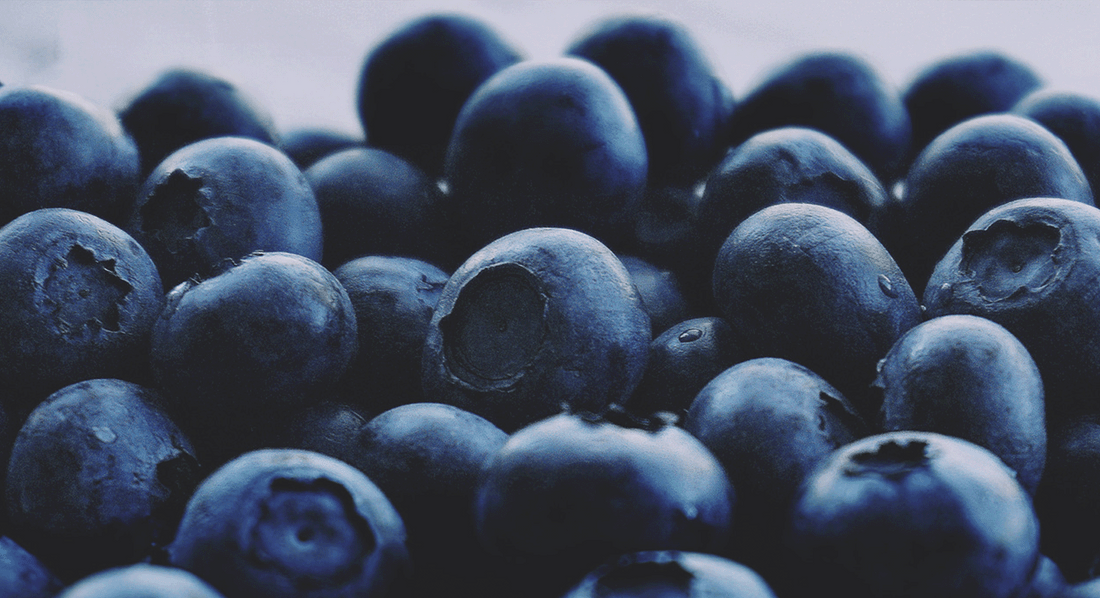A cousin to resveratrol but more potent—pterostilbene is found in certain berries and nuts and serves as a powerful antioxidant.
Key Takeaways:
-
Pterostilbene is a powerful antioxidant found in certain berries and nuts that is similar to resveratrol but more potent.
-
Pterostilbene has a slightly different structure that makes it more bioavailable than resveratrol.
-
Pterostilbene is a potent activator of SIRT1, an NAD(+)-dependent enzyme that plays a critical role in cellular health and DNA maintenance.
Related Products:
-
Basis: contains NR and pterostilbene, which work together to support cellular aging and healthy DNA by increasing NAD+ levels and activating SIRT1.
In 2003, researchers gave red wine drinkers everywhere reason to raise a glass when they announced that resveratrol — a natural chemical found in, among other things, grape skins — might have benefits.
Resveratrol, they found, impacted yeast in unique ways. Plus, it seemed to induce gene expression changes that gave them reason to believe the compound might be beneficial to humans.
But 15 years and thousands of scientific studies later, and resveratrol hasn’t lived up to its initial promise. The trouble is, it disappears from the body in roughly 15 minutes — meaning, in scientific terms, it isn’t very bioavailable.
So researchers have pinned their hopes on a new rising star called pterostilbene (pronounced tear-oh-STILL-bean), which is very similar to resveratrol but with one tiny but crucial structural difference: It has just one hydroxyl group, compared to resveratrol's three. Hydroxyl groups facilitate metabolization (the way to get rid of the molecule) by the body. Fewer hydroxyl groups make it harder for the body to eliminate the molecule — no bad thing when the molecule has benefits. The upshot is that pterostilbene's slightly different molecular structure allows it to cross cell membranes more easily and hang out in the body longer than resveratrol.
“Resveratrol was like the poster child for polyphenols,” says Ryan Dellinger, Elysium’s director of scientific affairs whose doctoral research involved pterostilbene. There is no great reason for this: Dellinger thinks it’s likely because, with limited money and time for scientific research (and more than 500 “promising” polyphenols to study), companies and scientists focused on the one that —at the time— seemed the most promising.
One good thing: Pretty much everything you know about resveratrol is true for pterostilbene, Dellinger says. Only it’s more potent.
How Pterostilbene Works
Pterostilbene is a polyphenol, a type of molecule that occurs in plants, particularly small berries and nuts. Blueberries are a particularly rich source of pterostilbene; although it is found in grapes, pterostilbene (unlike its cousin resveratrol) doesn’t survive the wine-making process.
What’s a polyphenol? “Phenol” refers to a certain chemical structure (in this case, a hydroxyl group linked to a benzene ring); “poly” just means the molecules have more than one of the structure. One of polyphenols’ main jobs is to help the plant fight off pathogens. When eaten by humans, polyphenols may serve as powerful antioxidants.
Scientists have been aware of phenols since the early 19th century — Joseph Lister, the pioneer of antiseptic surgery, reported on one phenol’s disinfectant properties in 1867 — though the term “polyphenol” didn’t have its first recorded use until 1894.
As with the rest of polyphenols, researchers don’t fully understand how pterostilbene works. Dr. Jose M. Estrela, a professor of physiology at the University of Valencia (Spain) who has studied pterostilbene says "the good thing is that pterostilbene works, but the bad thing is that we cannot fully explain its potential health benefits with the information that we have.”
The Future of Pterostilbene
Pterostilbene’s connection to sirtuins is just one of the reasons scientists are so excited by the compound. And why pterostilbene is included in our NAD+ supplement Basis. The potent combination of the NAD+ precursor, nicotinamide riboside (NR), and pterostilbene in Basis is designed to increase NAD+ levels and counter the decrease in the activity of sirtuins, which occurs with normal aging.
But more benefits of pterostilbene are likely to be uncovered. Consider this: There are about 11,000 published scientific papers about resveratrol, versus barely 400 on pterostilbene. But research on pterostilbene is at least 10 years behind resveratrol. Give it time.
Get Elysium news, subscriber-only product offers, and a monthly digest of new research in the field of aging. Sign up for our newsletter.




